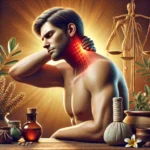Ayurvedic treatment for Elbow Pain
Introduction
Tennis elbow, also known as lateral epicondylitis, is a condition that affects the tendon of the elbow joint and results in pain around the elbow’s edge.Increased strain, excessive use, and wear and tear on the muscles that attach to your elbow and wrist are the main causes of tendon inflammation.Ayurvedic treatment for tennis elbow involves herbal oils, medicinal pastes, dietary adjustments, and therapies like Abhyanga and Swedana to reduce pain and inflammation naturally.
The condition got its name because it is most commonly seen in people who play racquet sports like tennis. It is not exclusive to tennis players, though, as other strenuous activities that put a lot of strain on the elbow’s extension muscles can also make it worse.
Reasons
- Repetitive or ongoing elbow strain brought on by agitated motions
- Absence of flexibility or strength
- Lack of strength within the shoulder muscles
- Excessive pressure on nerves
Risk elements for tennis elbow
- Tree-cutting
- Painting
- Plumbing and Carpentry
- Working on automobiles
- On an assembly line
- Scrubbing and gardening
- Continuous typing and writing
- Playing golf, tennis, and throwing a ball
- Activities involving throwing and pitching
- Performing a variety of musical instruments
- Kitchen tasks, like using a knife to cut
Signs and symptoms
- Elbow swelling, redness, and warmth
- discomfort in the elbow’s outer region
- Inflammation and tenderness in the elbow’s outer region
- Movement pain, particularly when lifting objects
- Pain in the wrist when holding objects
- A dull ache that travels down into the forearms even when you’re not moving
- Morning stiffness in the elbows
- The wrist joint is weak.
Tests to validate the diagnosis
The physician stabilizes the proximal portion of the hand while resisting the extension of the third digit. The lateral epicondyle is hurt and uncomfortable as a result. Read more here.
The diagnosis is confirmed by MRI and X-ray tests.
An Ayurvedic Perspective on Tennis Elbow
Ayurveda states that the primary cause of tennis elbow is the initial vitiation of Pitta dosha, which subsequently aggravates Vata dosha over time. The vitiated doshas cause elbow movement to be difficult.
Tennis elbow panchakarma treatment
- Arm rest
- Gentle Oleation of Snehana (Snehana)
- Treatment for mild perspiration (Swedana)
- For Patrapinda Sweda, also called Ela Kizhi, a pack of salt and particular leaves is tied, dipped in oil, and applied to the elbow. lessens discomfort.
- Shastika Pinda Shali Swedam or Navarakizhi, made with rice and milk, can strengthen and repair a torn tendon in the elbow.
- Pizhichil (medicated oil bath) is one of the medications used to reduce inflammation and pain in the muscles and tendons.
- Lepanam, Upanaha (herbal bandages), and Dhanyamladhara (Swedana), or sweating treatment.
- Pichu therapy
- Agnikarma
Tennis elbow can benefit from external medication.
- The oral form of Ksheerabala taila 101 is used to revitalize the tendon.
- Bala taila: Massage strengthens tendons and muscles.
- Sahacharadi taila: When elbow joints are stiff, massage is particularly helpful.
- Prasarini taila eases nerve irritation and lessens pain.
- Dhanvantara taila is applied externally to reduce inflammation and swelling.
- Avartita maharaja prasarini taila is used to treat torn tendons and relieve nerve irritation.
- The Murivennam
- Taila Ksheerabala
- Taila Kottamchukkadi
- Taila Nirgundi
Internal medications
- Dashamoolarishta
- Balarishtha
- Jeerakarishtha
- The Asthavarga Maharsnadi Kashaya Amritottara KashayaSahacharadi KashayaKashaya
- Kashaya Rasnasaptaka
- Guggulu Yogaraja
- Guggulu Mahayogaraja.
- Guggulu Gokshuradi
- Guggulu Kaishora
- Rasa Vatavidhwamsa
- Ekangaveera rasa
- Rasa Mahavatavidwansa
- Rasayana Ajamamsa
Physical Therapy
“A tennis elbow strap, also known as a tennis elbow brace, not only maintains the tendons and muscles in a rigid position but also provides them with the necessary rest and recuperation time. Moreover, it helps reduce excessive movement, thereby preventing further strain. Ideally, it can be used for at least four to eight hours a day for optimal benefits.”
Strengthening exercises: Certain exercises are beneficial for fortarm muscle strengthening.
Treatments for tennis elbow at home
Grab some fresh castor leaves. Use sesame oils or any of the herbal oils mentioned above on it. Place it on a hot pan. Spend two to ten minutes applying this to the afflicted area. To avoid harming the skin and underlying tissue, make sure the leaves are not overheated. They should ideally be just lukewarm.
“You can repeat the process using Vitex negundo (Nirgundi) leaves if you obtain them.”
“Heat equal amounts of mustard oil (Sarshapa taila) and castor oil (Eranda taila), then wrap the mixture around the lesion using a piece of cloth. Grind ginger (Shunthi) and wheat into fine powders, then mix them with a small amount of warm water to create a thick paste. Apply this paste to the affected area of the tennis elbow. If needed, wrap the area with a cloth.”
Advice for prevention
- Steer clear of elbow strain.
- Determine which activity is causing your tennis elbow and find a substitute.
- To avoid any stiffness or discomfort, get professional training before playing sports like squash or tennis. Warm up before beginning any intense exercise to increase your range of motion. Stretch and do exercises that strengthen your forearms, like dumbbell curls.
- Put on a brace or tennis elbow band.
- To hasten recovery, perform strengthening and stretching exercises for your forearms.
- To prevent more pain and inflammation, make sure you allow yourself enough time to rest.
The treatment program consists of
- Ayurvedic doctor consultation at the beginning and daily follow-up
- Accommodation
- All herbal drinks and Ayurvedic breakfast, lunch, and dinner meals.
- Tips for Managing Your Diet and Lifestyle.
Back Pain Treatment in Ayurveda


